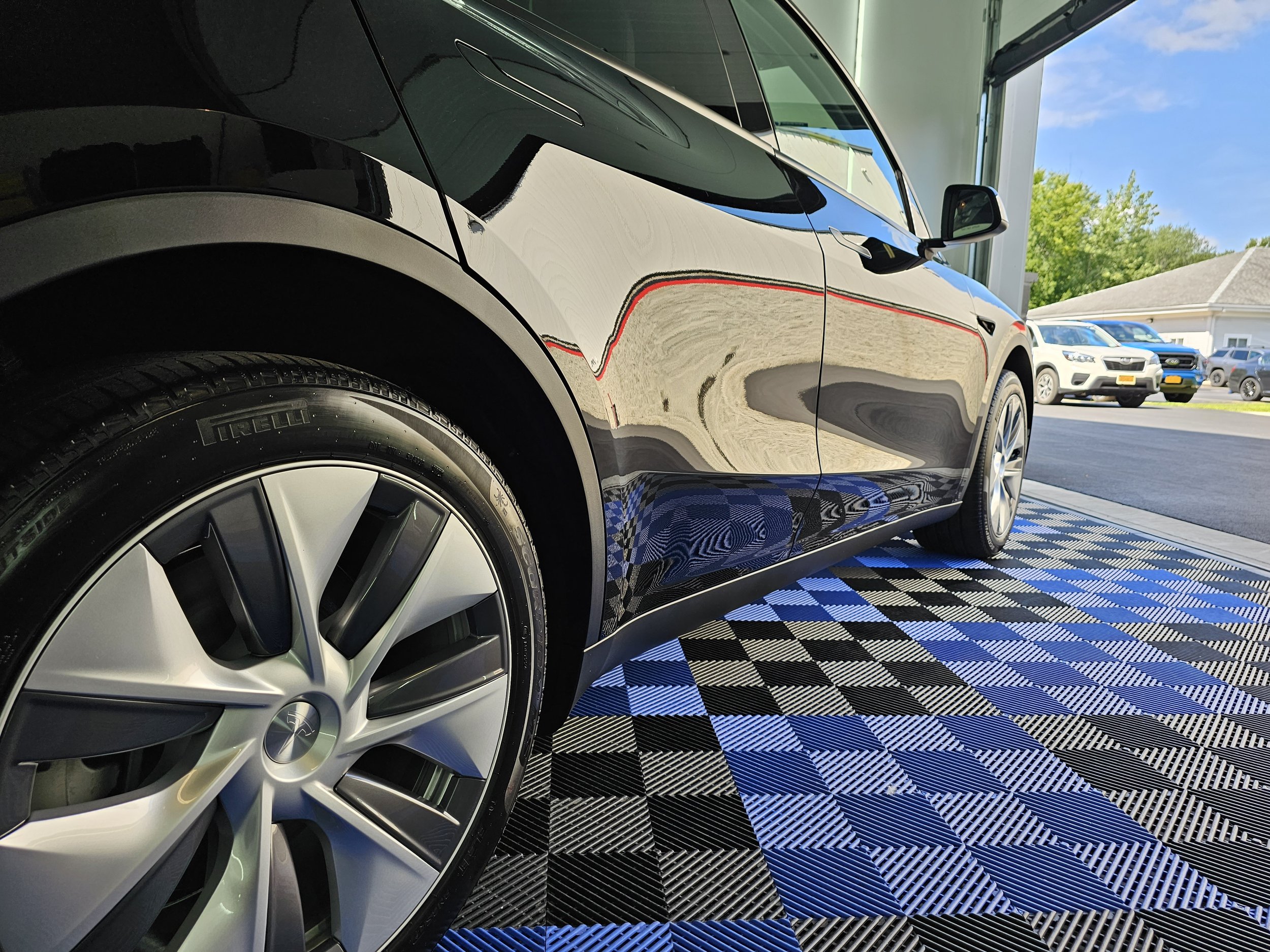Ceramic Coating vs. Paint Protection Film: Which is Right for Your Car?
When it comes to protecting your beloved vehicle's pristine finish, two popular options stand out: ceramic coatings and paint protection films (PPF). Each of these choices has its unique benefits and drawbacks. In this article, we'll delve into the key differences and advantages of ceramic coatings and PPF, helping you make an informed decision to safeguard your ride.
Ceramic Coating:
Ceramic coatings have gained immense popularity in recent years, and for good reason. They offer several benefits that make them a top choice for many car owners.
Advantages of Ceramic Coating:
Enhanced Gloss and Shine: Ceramic coatings provide a brilliant, deep gloss that intensifies your vehicle's appearance, giving it that "just waxed" look.
Chemical Resistance: These coatings offer resistance to various environmental contaminants, such as bird droppings, tree sap, and road salts, preventing them from etching into your vehicle's paint.
UV Protection: Ceramic coatings shield your car's paint from harmful UV rays, reducing the risk of fading or oxidation over time.
Ease of Maintenance: They make routine cleaning a breeze, as dirt and grime slide off more easily, requiring less effort to maintain that pristine look.
Disadvantages:
Professional Application: Proper application of ceramic coating requires professional expertise to ensure it adheres correctly and provides optimal protection.
Cost: Quality ceramic coatings can be relatively expensive upfront, but they offer long-term value for your investment.
Limited Protection Against Impact: While they provide excellent chemical resistance, ceramic coatings offer minimal protection against physical impact, like rock chips.
Not a Miracle Solution: Ceramic coatings won't make your vehicle invincible; they won't protect against major accidents or deep scratches.
Black 2023 Tesla Model Y with a paint correction and ceramic coating
Paint Protection Film (PPF)
Paint Protection Film (PPF), also known as clear bra or clear film, is a transparent, polyurethane-based material that is applied to the exterior surfaces of a vehicle to protect the paint from various forms of damage. PPF is designed to create an invisible barrier that shields your car's paint from common hazards such as rock chips, scratches, insect splatters, road debris, and even minor abrasions. It acts as a sacrificial layer, absorbing and dispersing the impact energy before it reaches the paint surface.
Advantages:
Physical Impact Protection: PPF acts as a shield against rock chips, scratches, and other minor physical damage, making it ideal for high-impact areas like the front bumper and hood.
Self-Healing Properties: Some PPFs have self-healing properties, where minor scratches and swirl marks disappear with exposure to heat or sunlight.
Transparent: High-quality PPF is virtually invisible when applied correctly, preserving your vehicle's original appearance.
Easy Maintenance: Cleaning is hassle-free, and PPF resists staining from environmental contaminants.
Customizable: PPF can be applied to specific areas or the entire vehicle, allowing you to tailor protection to your needs.
Disadvantages:
Cost: Paint protection film installation tends to be more expensive than ceramic coatings, especially for full-body applications.
Complex Installation: Applying PPF requires skilled technicians who must precisely cut and fit the film to your vehicle's contours, which can be time-consuming.
Appearance: While PPF is nearly invisible, some might notice a slight line where the film ends, particularly if it's not expertly installed. this issue is minimized with wrapped edges and or corners.
2011 Mustang GT after a full paint correction, headlight restoration, ceramic coating, and PPF for the headlights
Choosing the Right Protection:
Now that we've explored the advantages of both options, it's important to consider your individual needs when deciding between ceramic coatings and PPF. Here are some factors to keep in mind:
If you want to maintain your car's glossy appearance and protect it from environmental factors, ceramic coatings are an excellent choice.
For drivers frequently encountering gravel roads or facing a higher risk of rock chips, PPF provides unmatched physical protection.
Some car enthusiasts even opt for a combination of both, using ceramic coatings for overall protection and PPF in high-impact areas.
In conclusion, the choice between ceramic coatings and paint protection film ultimately depends on your priorities and driving habits. Both options offer valuable protection for your vehicle, and you can even combine them for maximum coverage. No matter which path you choose, your car will thank you for the extra care and attention.
Thank you for reading, and we hope this article has helped you make an informed decision to protect your prized possession! If you have any questions or need further guidance, please feel free to reach out. Safe and happy driving!



